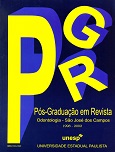Estudo da prevalência de disfunção craniomandibular segundo o índice de Helkimo tendo como variáveis: sexo, faixa etária e indivíduos tratados ou não ortodonticamente
DOI:
https://doi.org/10.14295/bds.1999.v2i2.46Abstract
Cem indivíduos com idades entre 18 e 25 anos, estudantes de Odontologia, não pacientes, foram entrevistados e examinados clinicamente com o objetivo de se avaliar a prevalência e o grau de severidade de Disfunção Craniomandibular. Para tal, foram utilizados índices que constam de avaliações subdivididas em três classificações diferentes: índice anamnético, disfunção clínica e oclusal, levando-se em consideração variáveis como sexo, faixa etária e o fato de terem sido submetidos, ou não, a tratamento ortodôntico. Os resultados obtidos mostraram que 42% dos indivíduos apresentaram sintomas subjetivos leves e nenhum indivíduo apresentou sintomas subjetivos severos. Dos indivíduos, 56% apresentaram algum índice de disfunção clínica, sendo 25% de grau médio ou severo. As mulheres apresentaram um índice mais elevado, com significância estatística. Dos indivíduos 66%, apresentaram um índice oclusal de grau leve e 11% de grau severo. O sexo, faixa etária e tratamento ortodôntico não mostraram diferenças significativas quanto à presença, ou não, de má oclusão.
Downloads
Downloads
Published
How to Cite
Issue
Section
License
Brazilian Dental Science uses the Creative Commons (CC-BY 4.0) license, thus preserving the integrity of articles in an open access environment. The journal allows the author to retain publishing rights without restrictions.
=================




























